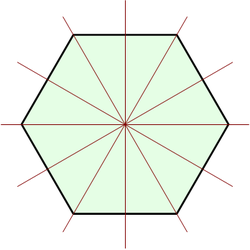
Back تمثيل زمرة Arabic Representación de grupu AST Төркөм күрһәтмәһе Bashkir Representació de grup Catalan Reprezentace (grupa) Czech Darstellung (Gruppe) German Grupa prezento Esperanto Representación de grupo Spanish Taldeen errepresentazio Basque نمایش گروه Persian

In the mathematical field of representation theory, group representations describe abstract groups in terms of bijective linear transformations of a vector space to itself (i.e. vector space automorphisms); in particular, they can be used to represent group elements as invertible matrices so that the group operation can be represented by matrix multiplication.
In chemistry, a group representation can relate mathematical group elements to symmetric rotations and reflections of molecules.
Representations of groups allow many group-theoretic problems to be reduced to problems in linear algebra. In physics, they describe how the symmetry group of a physical system affects the solutions of equations describing that system.
The term representation of a group is also used in a more general sense to mean any "description" of a group as a group of transformations of some mathematical object. More formally, a "representation" means a homomorphism from the group to the automorphism group of an object. If the object is a vector space we have a linear representation. Some people use realization for the general notion and reserve the term representation for the special case of linear representations. The bulk of this article describes linear representation theory; see the last section for generalizations.